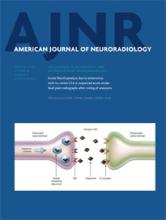Abstract
BACKGROUND AND PURPOSE: In proximal anterior circulation occlusive strokes, collateral flow is essential for good outcome. Collateralized vessel intensity in TOF- and contrast-enhanced MRA is variable due to different acquisition methods. Our purpose was to quantify collateral supply by using flow-weighted signal in TOF-MRA and blood volume–weighted signal in contrast-enhanced MRA to determine each predictive contribution to tissue infarction and reperfusion.
MATERIALS AND METHODS: Consecutively (2009–2013), 44 stroke patients with acute proximal anterior circulation occlusion met the inclusion criteria with TOF- and contrast-enhanced MRA and penumbral imaging. Collateralized vessels in the ischemic hemisphere were assessed by TOF- and contrast-enhanced MRA using 2 methods: 1) visual 3-point collateral scoring, and 2) collateral signal quantification by an arterial atlas-based collateral index. Collateral measures were tested by receiver operating characteristic curve and logistic regression against 2 imaging end points of tissue-outcome: final infarct volume and percentage of penumbra saved.
RESULTS: Visual collateral scores on contrast-enhanced MRA but not TOF were significantly higher in patients with good outcome. Visual collateral scoring on contrast-enhanced MRA was the best rater-based discriminator for final infarct volume < 90 mL (area under the curve, 0.81; P < .01) and percentage of penumbra saved >50% (area under the curve, 0.67; P = .04). Atlas-based collateral index of contrast-enhanced MRA was the overall best independent discriminator for final infarct volume of <90 mL (area under the curve, 0.94; P < .01). Atlas-based collateral index combining the signal of TOF- and contrast-enhanced MRA was the overall best discriminator for effective reperfusion (percentage of penumbra saved >50%; area under the curve, 0.89; P < .001).
CONCLUSIONS: Visual scoring of contrast-enhanced but not TOF-MRA is a reliable predictor of infarct outcome in stroke patients with proximal arterial occlusion. By atlas-based collateral assessment, TOF- and contrast-enhanced MRA both contain predictive signal information for penumbral reperfusion. This could improve risk stratification in further studies.
ABBREVIATIONS:
- AUC
- area under the curve
- CE
- contrast-enhanced
- CI
- collateral index
- CS
- collateral score
- CVA
- collateral vessel abundance
- FIV
- final infarct volume
- PPS
- percentage of penumbra saved
- ROC
- receiver operating characteristic
- Tmax
- time-to-maximum
- VOL
- volume
- © 2015 by American Journal of Neuroradiology












